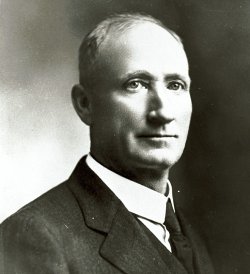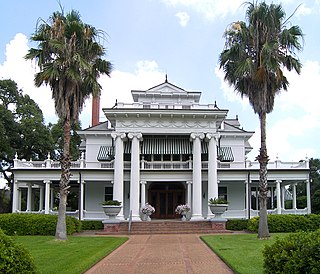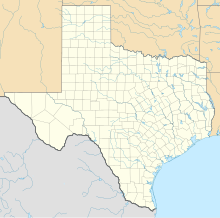
The history of the petroleum industry in the United States goes back to the early 19th century, although the indigenous peoples, like many ancient societies, have used petroleum seeps since prehistoric times; where found, these seeps signaled the growth of the industry from the earliest discoveries to the more recent.

Spindletop is an oil field located in the southern portion of Beaumont, Texas in the United States. The Spindletop dome was derived from the Louann Salt evaporite layer of the Jurassic geologic period. On January 10, 1901, a well at Spindletop struck oil. The Spindletop gusher blew for 9 days at a rate estimated at 100,000 barrels (16,000 m3) of oil per day. Gulf Oil and Texaco, now part of Chevron Corporation, were formed to develop production at Spindletop. According to Daniel Yergin, the Spindletop discovery led the United States into the oil age. Prior to Spindletop, oil was primarily used for lighting and as a lubricant. Because of the quantity of oil discovered, burning petroleum as a fuel for mass consumption suddenly became economically feasible.

Beaumont is a city in and the county seat of Jefferson County, Texas, in the United States, within the Beaumont–Port Arthur Metropolitan Statistical Area. Located in Southeast Texas on the Neches River about 85 miles (137 km) east of Houston, Beaumont had a population of 117,267 at the time of the 2010 census, making it the 30th most populous city in the state of Texas.

Anthony Francis Lucas was an American Croatian-born oil explorer. With Pattillo Higgins he organized the drilling of an oil well near Beaumont, Texas, that became known as Spindletop. This led to the widespread exploitation of oil and the start of the petroleum age.

The Mid-continent oil field is a broad area containing hundreds of oil fields in Arkansas, Kansas, Louisiana, New Mexico, Oklahoma and Texas. The area, which consists of various geological strata and diverse trap types, was discovered and exploited during the first half of the 20th century. Most of the crude oil found in the onshore mid-continent oil field is considered to be of the mixed base or intermediate type.

The Drake Well Museum and Park is a museum that interprets the birth of the American oil industry in 1859 by "Colonel" Edwin Drake along the banks of Oil Creek in Cherrytree Township, Venango County, Pennsylvania in the United States. The museum collects and preserves related artifacts. The reconstructed Drake Well demonstrates the first practical use of salt drilling techniques for the extraction of petroleum through an oil well. A historic site, the museum is located in Cherrytree Township, 3 miles (4.8 km) south of Titusville on Drake Well Road, situated between Pennsylvania Routes 8 and 27. The museum is accredited by the American Alliance of Museums.

Saratoga is an unincorporated community in Hardin County, Texas, United States. It is located 36 miles (58 km) northwest of Beaumont. The ZIP code is 77585.

Pattillo Higgins was a businessman as well as a self-taught geologist. He earned the nickname the "Prophet of Spindletop" for his endeavors in the oil business, which accrued a fortune for many. He partnered to form the Gladys City Oil Gas and Manufacturing Company and later, established the Higgins Standard Oil Company.
Glenn Herbert McCarthy was an American oil tycoon. The media often referred to him as "Diamond Glenn" and "The King of the Wildcatters". McCarthy was an oil prospector and entrepreneur who owned many businesses in various sectors of the economy. McCarthy founded the Shamrock Hotel in Houston, which garnered him national fame and inspired the fictional character Jett Rink in Edna Ferber's 1952 novel Giant which, in 1956, became a film, which starred James Dean in the role.

The McFaddin–Ward House is a historic home in Beaumont, Texas, United States built in 1905 1906 in the Beaux-Arts Colonial Revival style. The 12,800-square-foot (1,190 m2) house and furnishings reflect the lifestyle of the prominent family who lived in the house for seventy-five years. The house was added to the National Register of Historic Places in 1971.

Beaumont is an Amtrak station in Beaumont, Texas, served by the Sunset Limited service.

The Bakken Formation is a rock unit from the Late Devonian to Early Mississippian age occupying about 200,000 square miles (520,000 km2) of the subsurface of the Williston Basin, underlying parts of Montana, North Dakota, Saskatchewan and Manitoba. The formation was initially described by geologist J.W. Nordquist in 1953. The formation is entirely in the subsurface, and has no surface outcrop. It is named after Henry Bakken, a farmer in Tioga, North Dakota, who owned the land where the formation was initially discovered while drilling for oil.

The Age of Oil, also known as the Oil Age, the Petroleum Age,, or the Oil Boom, refers to the era in human history characterised by an increased use of petroleum in products and as fuel. Though unrefined petroleum has been used for various purposes since ancient times, it was during the 19th century that refinement techniques were developed and gasoline engines were created.

The Ocean Star Offshore Oil Rig & Museum, located in Galveston, Texas, is a museum dedicated to the offshore oil and gas industry. Located next to the Strand National Historic Landmark District, the museum is housed on a retired jack-up rig set up in the Galveston harbor.
Michel Thomas Halbouty was an American geologist, petroleum engineer, and wildcatter. Credited with discovering more than 50 oil and gas fields, he twice declared bankruptcy, but came back each time to regain wealth. He authored hundreds of technical articles on petroleum geology, and two book-length histories of famous oil fields. Halbouty is often described, including in his New York Times obituary, as “legendary.”

The Texas oil boom, sometimes called the gusher age, was a period of dramatic change and economic growth in the U.S. state of Texas during the early 20th century that began with the discovery of a large petroleum reserve near Beaumont, Texas. The find was unprecedented in its size (worldwide) and ushered in an age of rapid regional development and industrialization that has few parallels in U.S. history. Texas quickly became one of the leading oil-producing states in the U.S., along with Oklahoma and California; soon the nation overtook the Russian Empire as the top producer of petroleum. By 1940 Texas had come to dominate U.S. production. Some historians even define the beginning of the world's Oil Age as the beginning of this era in Texas.
The Oil & Gas Journal is a leading petroleum industry weekly publication with a worldwide coverage. It is headquartered in Tulsa, Oklahoma and the journal has a major presence in Houston, Texas. The journal is published by Endeavor Business Media. Its publisher is Paul Westervelt, and editor is Bob Tippee. The first issue was published in 1902. Its online information services started in 1994.

The Spindletop-Gladys City Boomtown Museum is located in Beaumont, Texas, to commemorate the discovery of oil at the Spindletop Hill salt dome in Beaumont on Jan. 10, 1901. The discovery sparked an oil boom in Texas that continues today. Along with a gift shop with commemorative gifts, the museum features historical, period reenactments by area performers. A replica of the wooden oil derricks that once dotted the landscape of Spindletop Hill in the early 1900s has been erected near the museum. For special occasions and anniversaries, the museum staff “blows the gusher” with a plume of water and provides a historical narrative and sound effects to simulate the discovery of oil at Spindletop.
The following is a timeline of the history of the city of Beaumont, Texas, USA.
















